Planning Poker is an agile estimating and planning technique that is designed for the agile team to have consensus among the teams members and develop a strategy for implementing their plan. We use custom planning poker cards to keep things fun and not so serious. Planning poker so evoke conversation between the team so everyone understands what’s required and provide a relative estimate vs an absolute estimate.
This gamified technique has its intent to help software organizations produce higher levels of accuracy for how development timeframes are estimated as well as how much effort would be required to complete each task in their product backlog. Planning Poker also is utilized to estimate the relative size of user stories in Scrum.
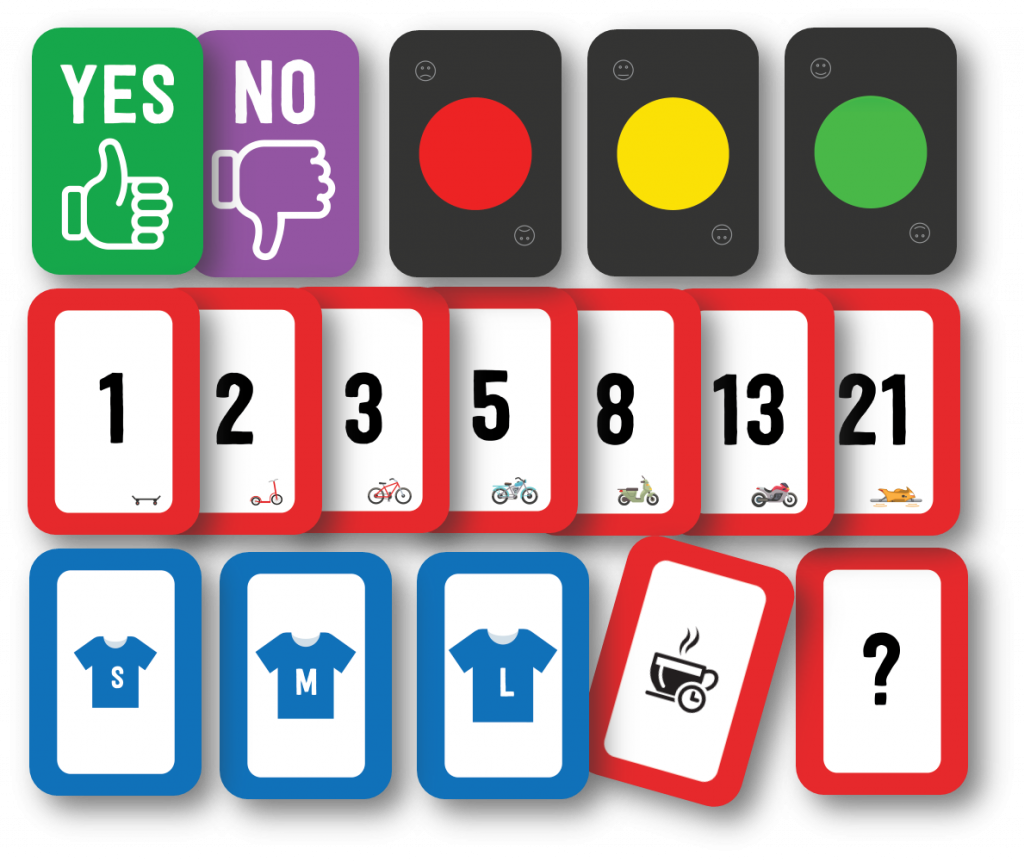
Planning Poker, which was redefined in 2002 from the Wideband Delphi Technique by James Grenning to be tailored towards agile teams, became popular through Mike Cohn, who through his company, trademarked the term after utilizing it in his book “Agile Estimating and Planning”.
As a consensus-based estimation technique, Planning Poker has the tendency to bring together stakeholders from various departments within an organization to reach a consensus on the estimated effort needed for several backlog initiatives. Within a software organization, these stakeholders can be the product owner, developers, product managers and several others.
Rules of Planning Poker
Planning Poker is a technique used to estimate stories where each person is given deck cards similar to the adjacent picture where each card has a story point value on it. The story is presented by the product owner and the team get to ask any questions. Then simultaneously everyone shows a card representing what they think the estimate should be.
There are a a few steps that should be considered when beginning a planning poker session. Planning Poker in essence is a card game and structuring planning poker sessions will have to begin with a product owner reading through an agile user story or descriptor of a software feature. This will be read to those that are responsible for estimation.
While each estimator is being presented with a user story or a feature, they should each have their own deck of cards. When each feature is presented, each estimator will be led to discuss the feature or take the time to ask any questions. Once these discussions of story points are completed, the estimators will each select a card to reflect their estimate. Be sure to have extra cards available for your voting team.
After a thorough discussion, the voting team will proceed to reveal their cards together at the same time. Make note that it is important for each feature to have the same estimation value. If each estimator selects the same value, that value becomes the estimate of the feature. If there is not a consensus between what the estimators selected, they will then discuss their estimates and will be required to communicate the justification for them.
After this discussion, they will restart the process of privately selecting a value and revealing them together. This continues until everyone has a consensus for the value of the feature or the entire team makes a decision that the agile estimating needs to be put on pause until they can gather more information. #
Estimating with Planning Poker
The estimation process for planning poker has each estimator holding a deck of Planning Poker cards with card values either in the Fibonacci sequence, T-Shirt Sizes, power of 2s, or a modified Fibonacci sequence. The Fibonacci sequence, which is the most recommended way of assigning value, will represent the amount of story points that the team will be estimating.

If there are differences they are discussed and then another round of estimating is attempted. After the second round if there is not a unanimous decision the highest value is given to the story.
Why Use Fibonacci Sequence in Planning Poker?
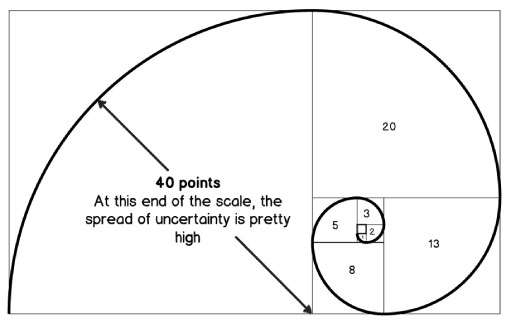
The Fibonacci Sequence, is developed by adding the two previous numbers together to get the next value in the sequence: 0, 1, 1, 2, 3, 5, 8, 13, 21. This process continues for however many tasks your team needs to assign. Utilizing the Fibonacci Sequence in a planning poker session is vital for ensuring accuracy in your agile teams estimations for a significant amount of reasons.
One of the primary reasons for using the Fibonacci sequence is that it gives an exponential. Having numbers building exponentially has shown itself useful to providing enough detail for smaller tasks, but in turn, it forces uncertainty for the larger and more complicated tasks. Making it a requirement for smaller tasks to have details allows so that the agile team can build estimates with uncertainty for the larger concepts so that there is more efficiency.
A second reason for using the Fibonacci Sequence is due to its ability to force your team to make decisions. Because there is no in between in assignments, no two tasks will have the same number. The sequence also forces your brain to identify the differences between the numbers because they have different values.
A third reason for using the Fibonacci Sequence is related to it being non-linear. The fact that the sequence is non-linear helps minimize over-analysis. It reduces the teams ability to breakdown tasks evenly or to compare them. The non-linear aspect of the sequences ensures that tasks are assigned without considering them of equal value to another task.
Benefits of Planning Poker
Agile teams report that they are consistently able to have accuracy of estimations with planning poker than any other technique. It comes with several benefits for your product development.
Planning Poker allows for teams to have a more accurate understanding of a features estimate due to its ability of having experts involved and expressing their opinions. These experts are from various disciplines throughout a software projects and because of it they are better suited for the task of estimating each feature than most people. Magne Jørgensen of Simula Research Lab, concluded how the most competent people regarding a particular task should be the same people that are estimating it.
A second benefit to planning poker is that the conversation during poker planning includes estimators being called to justify the reason for their estimation. This has been found to improve accuracy in areas where there may be uncertainty throughout software projects. Having an open line of communication within this process allows for more confidence and an increase in the development teams collaboration efforts. Product owners will find their teams have more engagement in comparison to other methods.
Thirdly, having estimators justify their estimates in a planning session has revealed to having items that compensate for information that may be missing. Having this justification process allow room for everyone to ask questions about the estimates as well as how it would be implemented and what would be required for implementation. This takes away from the vagueness of a project.
Our Favorite Top Custom Planning Poker Cards
Keep it Simple

Pretty in Pink Custom Scrum Cards
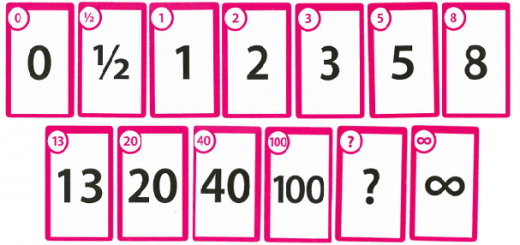
Easy to Print Planning Poker Cards
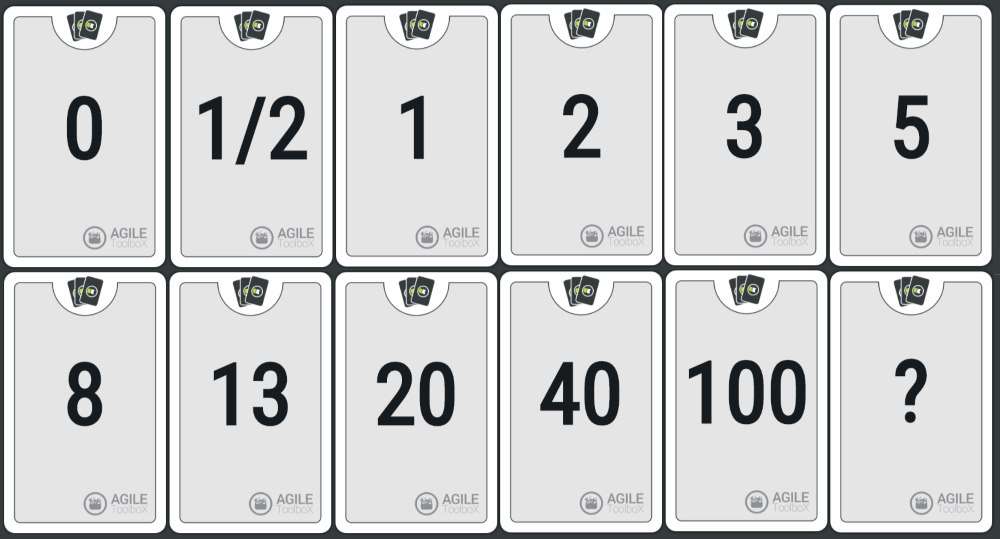
Unicorn vs a Whale Planning Poker Cards
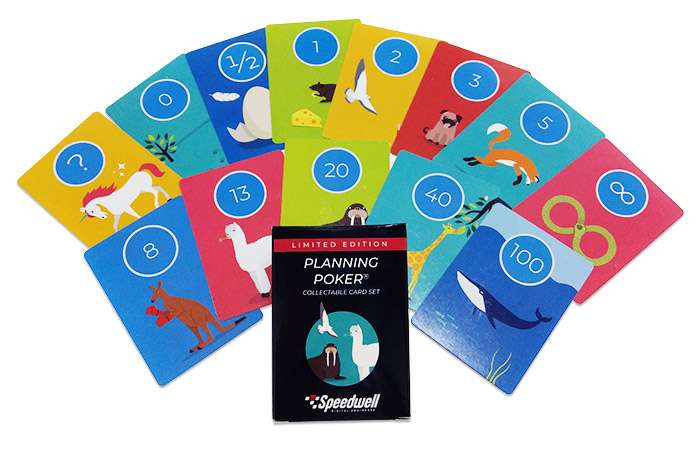
Everything is Relative Agile Estimating Cards
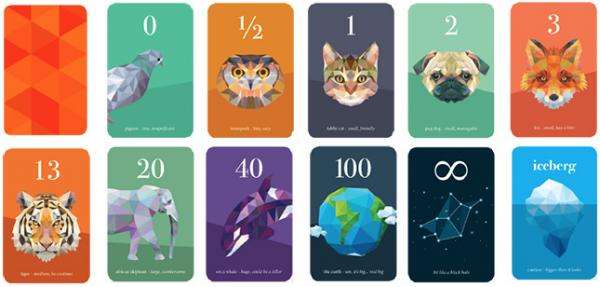
Stay Calm Planning Poker Cards
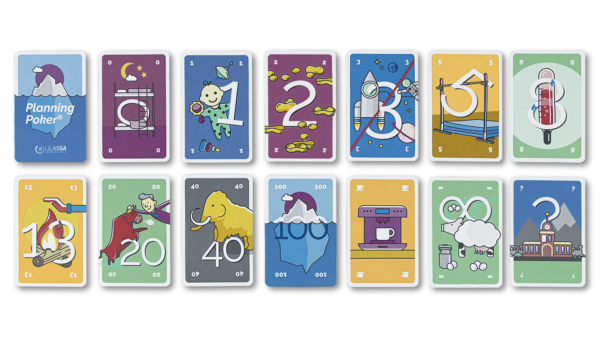
T-Shirt Sizing Custom Planning Poker Cards
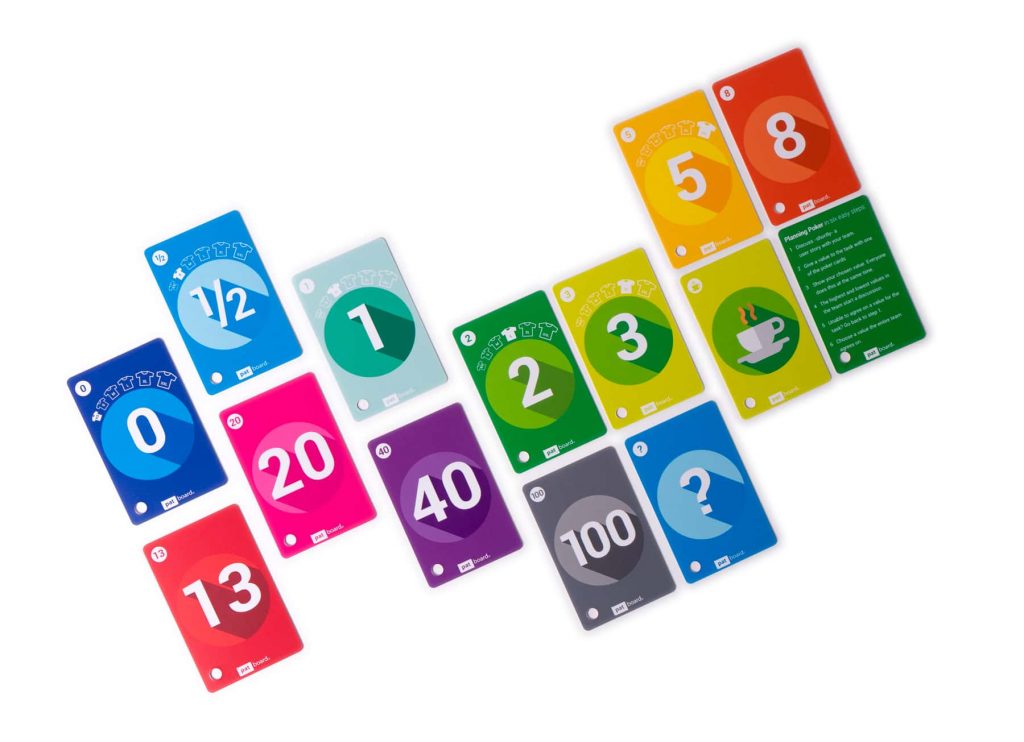
Planning Poker Apps
Navigating what is the best way to execute a planning poker session is important. There are a lot methods for your development team to be able to participate in a planning poker session. Mountain Goat Software sells cards for planning poker as well as licenses for you to create your own custom card sets for your team. There are also several apps that your team can use that provides a streamlined approach and utilize animated cards where estimators can assign vales accordingly to the submitted story points. Here is a list of 5 good external planning poker apps:
- Planning Poker this is a secure way for your agile team to have a guide for sprint planning and create an accurate consensus. Paid plans allows for Agile Scrum Planning Poker for Jira.
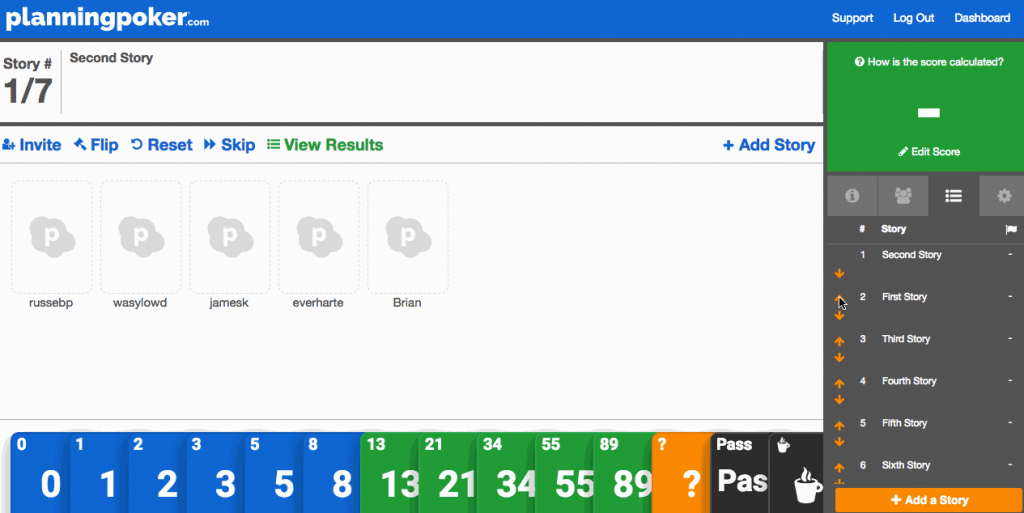
- Scrum Poker Provides a means for the scrum master to create a planning poker session and invite their team members to join the session. It is a free tool that doesn’t require a login to use. Scrum Poker also has an option to input a Jira plugin.
- Planning Poker Online While it doesn’t offer capability for Jira integration, this online platform allows for you to invite your team and start a session through the platform
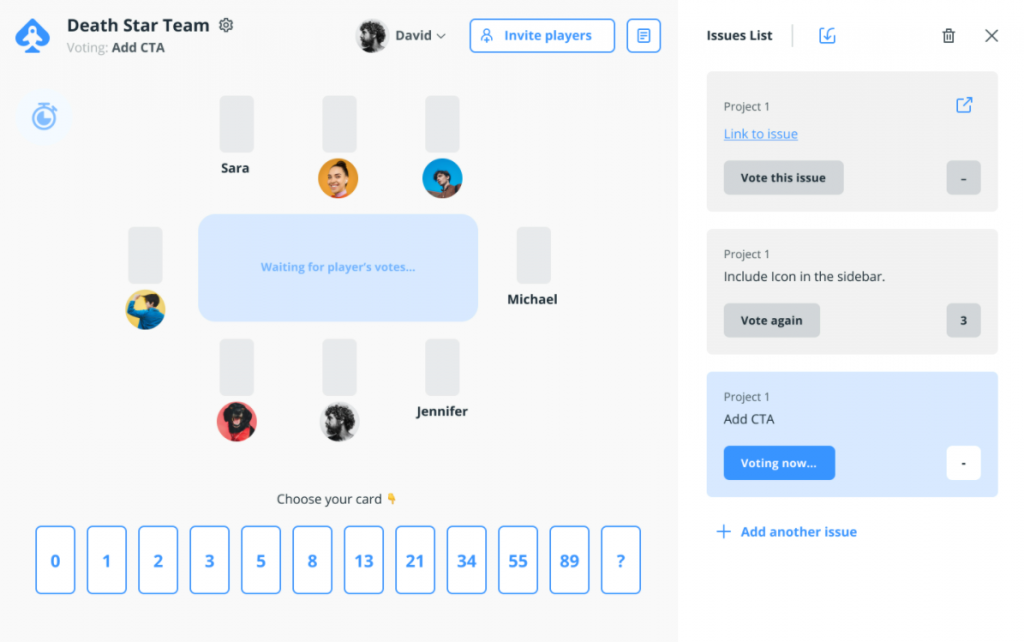
- Scrum Poker Cards is an app that your team can download on their phones and join a planning session.
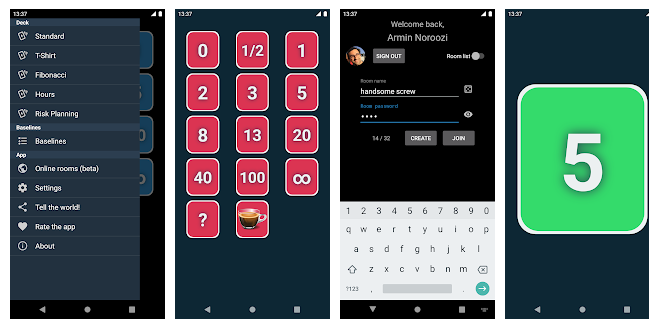
- Plan It Poker is a free online platform that allows for teams to access remotely at any location. It supports a variety of estimation methods including Fibonacci, Scrum, and T-shirt
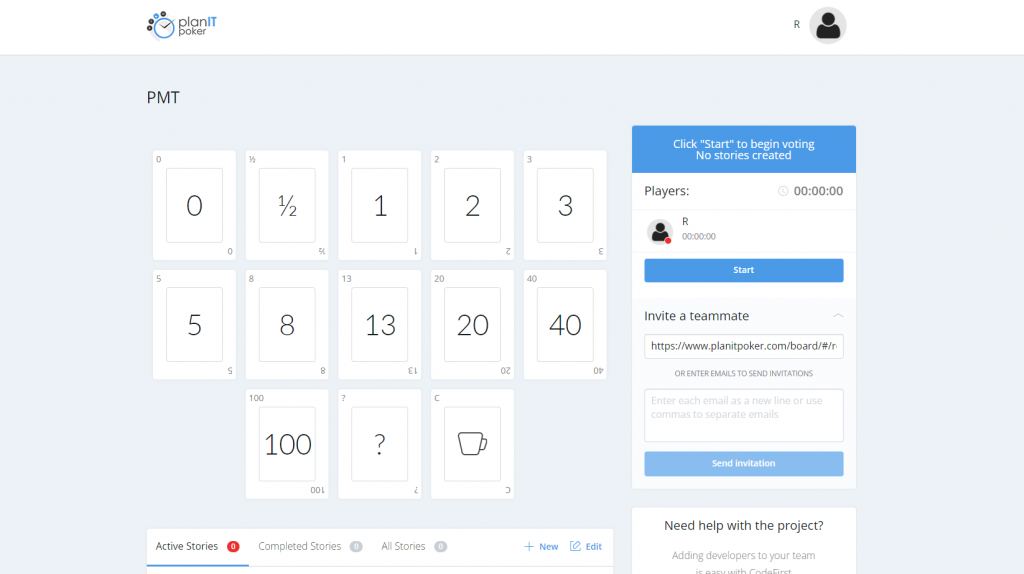
This article is part of the our 100 Agile Tools & Techniques epic article based off the PMI list of recommended techniques and tools in their PMI-ACP certification syllabus.
